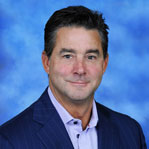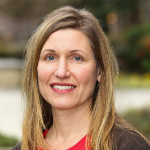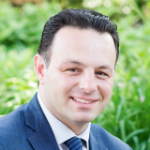 Aisha Glover, left, president and CEO, Newark Alliance, and Tim Sullivan, president of the New Jersey Economic Development Authority
Aisha Glover, left, president and CEO, Newark Alliance, and Tim Sullivan, president of the New Jersey Economic Development Authority
NEW BRUNSWICK, NJ—Communities repositioning aging downtown business districts to attract commercial developers, tenants, and new residents will need strong leadership capable of persuading constituents to embrace emerging development models, say morning plenary panelists at NJ Future's 13th annual Redevelopment Conference, held Friday in New Brunswick, NJ.
 “You need to engage your residents and your constituents, absolutely,” says Eugene R. Diaz, founder and principal of Prism Capital Partners, who participated in the panel, “Making Every Place A Great Place to Live and Work.” “But human nature being what it is, people don't like change, and they don't understand change. And it takes it takes powerful, strong leadership to tell them, 'You're wrong. Don't fight this. This is where the world is going. This is what needs to happen.'”
“You need to engage your residents and your constituents, absolutely,” says Eugene R. Diaz, founder and principal of Prism Capital Partners, who participated in the panel, “Making Every Place A Great Place to Live and Work.” “But human nature being what it is, people don't like change, and they don't understand change. And it takes it takes powerful, strong leadership to tell them, 'You're wrong. Don't fight this. This is where the world is going. This is what needs to happen.'”
Diaz praised the work of fellow panelist André Sayegh, mayor of Paterson, NJ, to bring smart growth to Paterson, but also noted that New Jersey's strong home rule government makes development difficult as local concerns over redevelopment are relitigated and revived virtually every time a project is discussed.
“We're fighting the same battles today that we did 10 and 15 years ago, and it's the same issues that are coming up,” he says. “'How are you going to change my town? What's going to be the impact? Oh, I don't like the people that might come in now, with what you're doing. What's going to happen to my schools?' The reality is that municipalities and strong leaders like the mayor here are going to do great because you're taking a strong stance, and you're saying, 'We need to embrace the change, and that the world has changed, and we need to move forward with a plan of economic development and redevelopment that embraces a changed world.'”
 Jennifer S. Vey
Jennifer S. Vey“For decades, planners and community development groups, and other place-focused organizations and practitioners have worked to elevate the importance of place and place-making, and fostering more economically socially and environmentally responsible development,” says Jennifer S. Vey, director of the Anne T. and Robert M. Bass Center for Transformative Placemaking, Brookings Institution, who moderated the panel. “For all the positive impacts, these efforts are constrained by policies, practices, and investment structures that are failing to keep pace with the changing needs of firms and institutions of workers, hampering the scope and the scale of their impact.”
New tools are needed to determine how to prioritize infrastructure investments in cities, towns and regions, so that businesses and jobs can grow, she says.
 Paterson Mayor Andre Sayegh
Paterson Mayor Andre SayeghIn Paterson, an urban environment ravaged by the decline of its manufacturing-based economy over the past several decades, Mayor Sayegh says the city has begun to achieve success in redevelopment by refocusing on several strengths: the physical grandeur of the Great Falls historic park and renewed interest in its connection to founding father Alexander Hamilton, thanks to the blockbuster Broadway show; a revival of local restaurants, efforts to encourage transit-oriented development near the city's train station; and a vibrant Muslim community in South Paterson that underscores the city's diversity.
“We are looking to leverage legacy assets and transform them into legacy projects,” Sayegh says. “I see myself as more than just the mayor. I'm the brand ambassador. I'm the head of sales. And I am the cheerleader in chief.”
Among the city's redevelopment efforts is an initiative to encourage film companies to locate productions in Paterson, the mayor says, noting that a new movie-based prequel of the popular HBO show, “The Sopranos,” will film in Paterson.
In Newark, a concerted effort was made to bring together developers and city planners to coordinate activities aimed at reactivating the downtown business district, says Aisha Glover, president and chief executive officer of the Newark Alliance.
“What we've really been focused on, particularly in the downtown, is trying to bring that residential density downtown,” she says. “The CBD was never really a hub for residential, and so that was really having a direct impact on the success of retail. The downtown was pretty much a ghost town after hours, and so [there was] a lot of concerted effort to make sure that we were activating that.”
Keeping artists and creatives in Newark is also a key part of the city's redevelopment strategy, Glover says. The city has a rich history of encouraging and fostering arts and culture, and city planners want to retain that energy, she says.
“It's a key part of our broader economic development strategy to make sure that we're figuring out ways to: A) retain the existing artists base, B) match them with developers and investors who are already in the city or coming into the city,” she says. “We've been more intentional with that, particularly on projects that the city is spearheading.” She cited as an example of integrating arts into redevelopment the 505 Clinton project on Clinton Avenue, which includes 27 residential units, performance space, gallery space, and a cafe.
“The goal there was really to kind of preserve artists housing, and provide studio and performance space for them,” she says.
Timothy Sullivan, president of the New Jersey Economic Development Authority, told the 750 attendees at the conference that the best ideas for development come from the community.
“The best ideas, and the best plans, the best planning ambitions, spring up from the closest level to the ground as you can find,” he says. “That community has the best handle on what it would like to see happen, what it would accept, what it would welcome, what it needs.”
© Touchpoint Markets, All Rights Reserved. Request academic re-use from www.copyright.com. All other uses, submit a request to [email protected]. For more inforrmation visit Asset & Logo Licensing.







